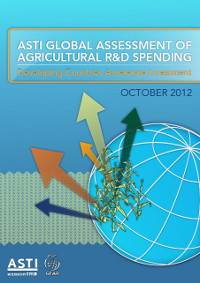Authors:
Nienke Beintema, Gert-Jan Stads, Keith Fuglie, and Paul Heisey
Year:
2012
Publisher
International Food Policy Research Institute | Washington, DC Agricultural Science and Technology Indicators | Rome, Italy Global Forum on Agricultural Research | Rome, Italy
Further information
Back to:
Overall, global agricultural R&D spending in the public and private sectors steadily increased between 2000 and 2008. As further proof of positive development, most of this growth was driven by developing countries, since growth in high-income countries stalled. But, spending growth in developing countries was largely driven by positive trends in a number of larger, more advanced middle-income countries—such as China and India—masking negative trends in numerous smaller, poorer, and more technologically challenged countries. Countries in this last group are often highly vulnerable to severe volatility in funding, and hence in spending, which impedes the continuity and ultimately the viability of their research programs. Many R&D agencies in this group lack the necessary human, operating, and infrastructural resources to successfully develop, adapt, and disseminate science and technology innovation.
Agricultural R&D stakeholders, including policymakers, donors, R&D managers, and international development groups, need reliable and up-to-date information on the status and direction of spending and human resource capacity levels. The complex interaction of new global challenges, including the recent food and financial crises and the effects of climate change, highlights the need for a continuous updating of key agricultural R&D indicators. ASTI’s role in this area is widely recognized and was discussed in the recent G8 and G20 reports. Through its widespread network of national, regional, and international partners, ASTI continues to monitor agricultural R&D spending levels worldwide and serves as an important implementer of the GCARD monitoring process— assuming ongoing international support is provided.

